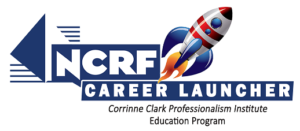By Jackie Young
While the standard dictionary definition of plateau is “to have something remain at a stable level or on an even keel,” the word plateau has a completely different meaning to court reporting students. Simply uttering the words speed plateau can cause extreme frustration and anxiety. Don’t let that happen to you!
One of the main obstacles all reporters will face at one time or another in their court reporting career is a lack of speed. No matter how well prepared you are, there will come a day when you meet a witness or an attorney who seems bound and determined to be forever enshrined in The Guinness Book of World Records for being the world’s fastest talker.
Most court reporting students will find that the other obstacle that goes hand in hand with a lack of speed, of course, is a lack of accuracy. If your fingers are struggling to capture every word, naturally your accuracy will go down. It is important to remember at times like this that struggling with speed and accuracy is not the end of the world, and it certainly should not stop you from fulfilling your dream of becoming a court reporter.
There is no secret potion or magical transformation that a reporter can instantaneously undergo that will allow him or her to write as fast and as accurately as NCRA’s speed champions. The good news, however, is that there are certain general tips you can follow to overcome and conquer those plateaus. With a little perseverance and hard work, you can and will be able to meet those challenges.
Tip No. 1: Concentrate. Concentration is perhaps one of the most important aspects of our job, and if you are suffering from poor concentration, your writing will show it. Before you begin practicing, take a few deep breaths to clear your mind of other thoughts and relax. Do a couple of one-minute takes in the beginning until you get warmed up, and then increase those gradually until you are able to accomplish the complete five-minute take without distractions. If you start to feel frustrated at a certain speed, pause for a moment, clear your mind, reaffirm to yourself that you can write at this speed, and begin again.
Tip No. 2: Use one-minute takes to increase your speed and accuracy. Select a one-minute segment at a speed that you can comfortably write at without many errors. Once you have finished writing that segment, read it back to yourself to see what errors you have made. Before you begin again, practice writing those words that caused you to hesitate or stumble. Then rewrite and reread the same segment at the same speed until you are able to write it flawlessly.
Once you have accomplished writing that segment without error, increase the speed slightly and begin again. This exercise will help you learn to hear and process the words at a faster rate, and train your fingers to move at a faster speed. Your fingers can only write as fast as your ears can hear and as fast as your brain can process the information.
Tip No. 3: Perform finger exercises every day. Take the time to write the alphabet and your numbers a couple of times. You can easily do this while you are waiting for class to start or before you begin your practice takes. As you write the letter, say the letters A, B, C, and so on in your head. Finger exercises will help enforce in your mind the placement of the keys and help eliminate hesitation. It will also help develop good finger dexterity and control.
Tip No. 4: Know your theory. If you find that your fingers are struggling with adding the D or S or you are faltering on words that start with S-M, go back through your theory books and rewrite those exercises to help reinforce your steno theory in your mind.
Tip No. 5: Read back your notes. Visualizing the steno on the paper or on your computer will help reinforce the correct letters and finger positions in your brain and help you recognize your errors before they become a habit. Circle your mistakes or write them on a piece of paper, and then rewrite them on your steno machine a number of times correctly so your fingers learn the correct placement. This will subsequently help you stroke those words without hesitation the next time you hear them.
Tip No. 6: Check your body and keyboard position. Be sure you are sitting comfortably and with both feet flat on the floor. Place your keyboard in a position where your forearms are about parallel with the floor and your fingers are naturally resting in the home position. If you find that you are experiencing pain in the muscles of your arms, shoulders, or back, it is likely your keyboard is positioned incorrectly, and you need to adjust the height of your machine, your chair, or both. Also, be sure your fingertips are not resting on the keys but are slightly above them. This will help you avoid adding unwanted extra letters.
Tip No. 7: Memorize and practice your briefs. There are mixed feelings about a reporter relying on too many briefs, but incorporating more briefs into my writing is the most important thing I have ever done as a court reporter to increase my speed and accuracy. I used to write the majority of everything out, but as I aged and it felt like more and more attorneys were talking faster and faster, I decided to incorporate two to three briefs on every job. For example, before the beginning of my deposition, I would look at the caption and create briefs for the names of the parties or other technical words that I thought might come up. If the plaintiff’s name was Tom Roberts, I would write that as T*R. Or, if the defendant’s name was Triumph Electronics Corporation, I would write that as T*E (Triumph Electronics) or T*EC for the full name. Before long, as you write, you will find yourself thinking of briefs for words that are difficult or come up frequently.
A strong word of caution, however: Before merging any brief into your job dictionary or main dictionary, please ensure that it does not cause any conflicts! One way to avoid conflicts is to incorporate the asterisk into your briefs whenever possible.
Now that you have created all these clever briefs, the next task is to remember and use them. Write them down on a piece of paper where you can easily see them during practice or on the job. You can also do this for other words or phrases that frequently come up on a practice tape or that you find yourself struggling with.
One other way I have incorporated more briefs into my writing is to listen to practice tapes and to find commonly used phrases or words. I come up with a brief, write it down on a piece of paper, and then listen and rewrite that segment of the tape two to three times to help reinforce that brief in my mind. After I feel comfortable writing those briefs, I then write the entire five-minute take and strive for accuracy.
Another strong word of caution: Writing briefs should be automatic. It is one thing to know you have a brief for a particular phrase, but it is a totally different thing to be able to write it without hesitation. Every day, memorize and practice briefs for common phrases and words until you no longer hesitate when you write them. It’s easier to remember briefs if they follow a similar pattern. For example, the phrases I don’t know, I don’t recall, I don’t remember, etc., should all have the same beginning, with only a slightly different ending. So if you are in a creative mood and want to shorten your writing, be sure to have a consistent pattern to your briefs whenever possible.
Tip No. 8: Have a positive attitude. If you practice regularly but you don’t feel like you are making any progress, don’t get discouraged. Whether you believe it or not, you are making progress — perhaps just a little more slowly than you would like. Above all else, don’t dwell on your mistakes or hesitations for days on end; that will bring you down mentally, and then you will fail. You can always come back a week or two down the road to work on any particular challenging issue.
Tip No. 9: Analyze your writing. Keep a list of hesitation words, and practice them daily. Whenever you hesitate over a word that comes up in the dictation, jot it down on a piece of paper and practice it a few times for the next few days. Once you find that you are stroking that particular word without hesitation, then move on to the next word. Repeat that exercise a few times, and your mind will automatically know how to write it. Keep those lists and review them every few months to make sure you haven’t forgotten how to stroke them effortlessly.
Tip No. 10: Make accuracy your first and most important goal. Establish a daily or weekly goal, such as “I will write 150 words per minute for five minutes with 10 or fewer errors.” By practicing your dictation in realtime, you will be able to monitor your error rate on each take. While on a deposition, I routinely challenge myself to see how low I can get my untranslate rate. Once you have your accuracy down, speed will naturally come to you.
The above is not an all-encompassing list, but incorporating most of these tips into your practices will give you a good start on improving your writing style and boosting your speed and accuracy. If you are having difficulty fitting in much practice time, just remember that it’s the quality, not the length, of your practice that really counts, so make it as productive as possible!
The last tip I will leave you with to help you overcome those speed plateaus is to simply relax and take it one step at a time so you do not feel too overwhelmed. Focus on the positive little steps that you make rather than worrying about the next speed test that might be coming up. People who focus on the positive will be able to challenge themselves to do their best and succeed at each stage of their career.
Jackie Young, RPR, is a freelancer in Delano, Minn. She can be reached at rite2jackie@yahoo.com.










